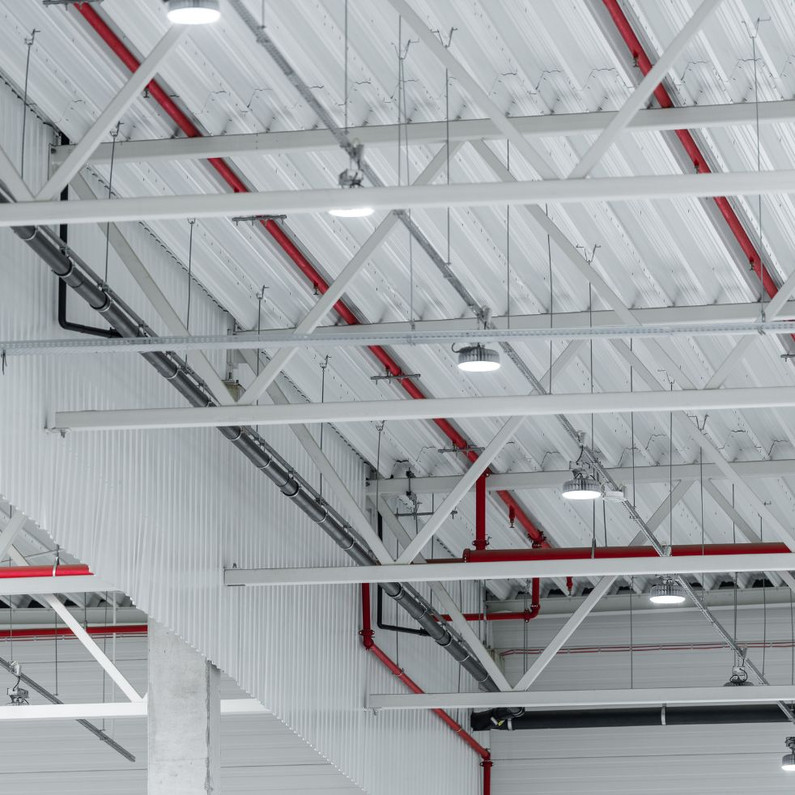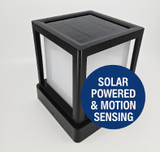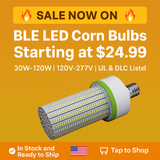Safe Lighting Tips for Warehouse Workplaces
Warehouse safety should always be a top priority. One often overlooked yet essential aspect of safety is the proper implementation of lighting. In this blog, we’ll discuss safe lighting tips for warehouse workplaces, ensuring your employees can complete their tasks efficiently and safely.
Determine the Necessary Lighting Levels
Understanding the necessary lighting levels for different areas of your warehouse is crucial. The Occupational Safety and Health Administration (OSHA) provides guidelines on minimum lighting requirements for different workspaces. However, these are minimums and may not always be sufficient for certain tasks. It's important to consider the nature of tasks performed in each area. For instance, areas where employees do detailed work may require brighter lighting than other sections. Adequate lighting not only enhances visibility but also contributes to workers' efficiency and reduces the risk of errors or accidents. Regularly evaluate your warehouse lighting and make necessary adjustments to ensure it meets the needs of your employees and aligns with safety regulations.
Choose the Right Type of Light Fixtures
Selecting the right type of fixtures for your warehouse is a critical decision that can significantly impact both visibility and energy efficiency. Traditional options like incandescent lights may be familiar but are less energy-efficient and have shorter lifespans compared to modern alternatives. Fluorescent bulbs, for instance, offer longer lifespans and greater energy efficiency, making them a cost-effective choice for large spaces. However, they can sometimes cause a flickering effect, which may be distracting to some workers.
LED lights are increasingly popular due to their superior energy efficiency, longevity, and ability to produce bright, natural-looking light. Moreover, they turn on instantly, don’t flicker, and work well in a variety of temperatures, making them ideal for most warehouse environments. High-intensity discharge (HID) lamps produce intense light perfect for large, high-ceilinged warehouses but consume more energy and have longer warm-up periods.
Remember that different areas of your warehouse may require different types of fixtures. For instance, you might use LED lamps in areas of more detailed work and HID lamps in storage areas. Always consider the specific lighting needs of each area when choosing the right light fixtures for your workplace.
Strategically Place Lights for Maximum Illumination
Choosing the correct lamps for your warehouse is only half the equation. One of the most essential safe lighting tips for warehouse workplaces is to consider strategic lighting placement. The goal should be to minimize dark spots and shadows, which can pose risks, especially in fast-paced warehouse environments.
For the most effective light distribution, fixtures should be above areas where workers perform tasks, not where equipment or shelving is. This is to prevent shadows falling on the workspace due to the blockage of light by the equipment or shelves. In high-ceiling warehouses, placing lights at staggered heights can help achieve more uniform illumination across different levels of racking.
In terms of aisle lighting, it's advisable to use long, linear light fixtures, as they provide strong directional light that’s ideal for narrow spaces. The fixtures should be parallel to the aisles to maximize light distribution.
Also, consider using motion sensor lights in low-traffic areas of the warehouse, such as infrequently accessed storage areas. This serves a dual purpose: conserving energy when the area is unused and ensuring immediate illumination when someone enters the area.
Strategic placement for maximum illumination is a crucial step that can greatly enhance the safety and efficiency of your warehouse operations. It’s advisable to periodically reassess your warehouse lighting setup and adjust as necessary, taking into account changes in the layout, nature of work, or the introduction of new equipment or processes.
Perform Regular Maintenance and Inspections
Regular maintenance and inspection of your warehouse lighting system is crucial for maintaining optimal lighting conditions and ensuring safety. It's not enough to install the correct type and number of lamps. You also need to check them periodically to confirm they work as intended. Over time, dust and grime can accumulate on fixtures, reducing their brightness and effectiveness. Regular cleaning of lamps and fixtures can help preserve their light output.
You should carry out scheduled inspections to identify any malfunctioning bulbs or fixtures and replace them promptly. This not only ensures consistent lighting levels across the warehouse but also prevents situations where a sudden lamp failure could create hazardous conditions.
Moreover, as part of the inspection process, consider any changes in lighting requirements due to shifts in warehouse operations or layouts. A previously well-lit area might become shadowed due to the movement of equipment or introduction of new structures.
Consider engaging professionals for periodic, thorough inspections and maintenance as well. They can provide expert analysis, identify potential issues, and offer advice on optimum lighting practices. A well-lit warehouse is a safer, more efficient workplace. Regular maintenance and inspection are vital for achieving this.
Address Emergency Lighting and Exit Signage
Equally crucial to a safe warehouse lighting system is the inclusion of adequate emergency lighting and clear exit signage. Emergency lighting is essential in situations where the primary power supply fails, causing normal illumination to cease. These lights enable workers to safely evacuate the warehouse in case of an emergency, reducing the risk of accidents and confusion. They also assist emergency services personnel in navigating the area more efficiently.
OSHA stipulates specific standards for emergency lighting, including battery-powered backup systems that activate automatically upon power failure. These systems should provide enough light to illuminate escape routes and undergo regular testing to ensure reliability.
In addition to emergency lighting, the proper placement and visibility of exit signs is paramount for warehouse safety. Exit signs should be strategically placed at every exit point and remain illuminated at all times, even during power outages. They should be clear, easily visible from any direction and unobstructed by any object or equipment. The signs should also comply with fire safety regulations, which typically require red or green "EXIT" lettering, a certain minimum size, and specific illumination levels.
Remember that having a well-planned and maintained emergency lighting system and visible exit signage isn’t just a legal requirement. It’s also a valuable safety measure for your warehouse. By prioritizing these aspects, you can ensure the safe and orderly evacuation of your warehouse in the event of an emergency.
Maintain Sufficient Backup Power
Having a reliable backup power source is critical in ensuring the continued availability of lighting during unexpected power outages. A sufficient backup system supports emergency lighting and exit signage. Furthermore, it helps prevent accidents and maintains the flow of operations by keeping crucial systems running.
Uninterruptible power supply (UPS) systems are a popular choice for warehouses due to their ability to provide instantaneous power during a blackout. These systems switch to battery power nearly instantaneously, allowing lighting systems and other critical equipment to continue operating without interruption.
Generators, on the other hand, are capable of providing power for a longer duration and can fuel larger systems. Still, they do require some time to start up and may not kick in immediately during a power outage. This is why people often use a combination of UPS systems and generators, with the UPS providing immediate power until the generator can start up and take over.
Regular testing and maintenance of these backup power systems are crucial to ensure their reliability. Tests should occur under load conditions to accurately assess the system's ability to handle real-world situations.
To ensure you have the best lighting options available for your warehouse, consider shopping with Induction Lighting Fixtures. We have a wide range of commercial wall pack lights perfect for indoor or outdoor use. Induction Lighting Fixtures focuses on safe, reliable, and sustainable fixtures that make your workplace safer and more efficient. If you have any additional questions or concerns, contact us anytime. A member of our team will help inform you about our products!
Recent Posts
-
How Long Will Solar Powered Lighting Operate in the Rain?
How Solar Light Fixtures Can Run for 10 Rainy Days If you’ve ever wondered how a Commercial solar li …Jul 30th 2025 -
Spotlight - The IL-SPG54 Smart Solar Walkway Light: Where Performance Meets Simplicity
Introducing the IL-SPG54 Smart Solar Walkway Light: Where Performance Meets Simplicity When it comes …Jun 16th 2025 -
Corn Bulb Sale - While supplies last!
⚡ Limited Time Sale – BLE Series Corn Lamps Starting at $24.99! Stock up now while supplies last – p …Jun 11th 2025






